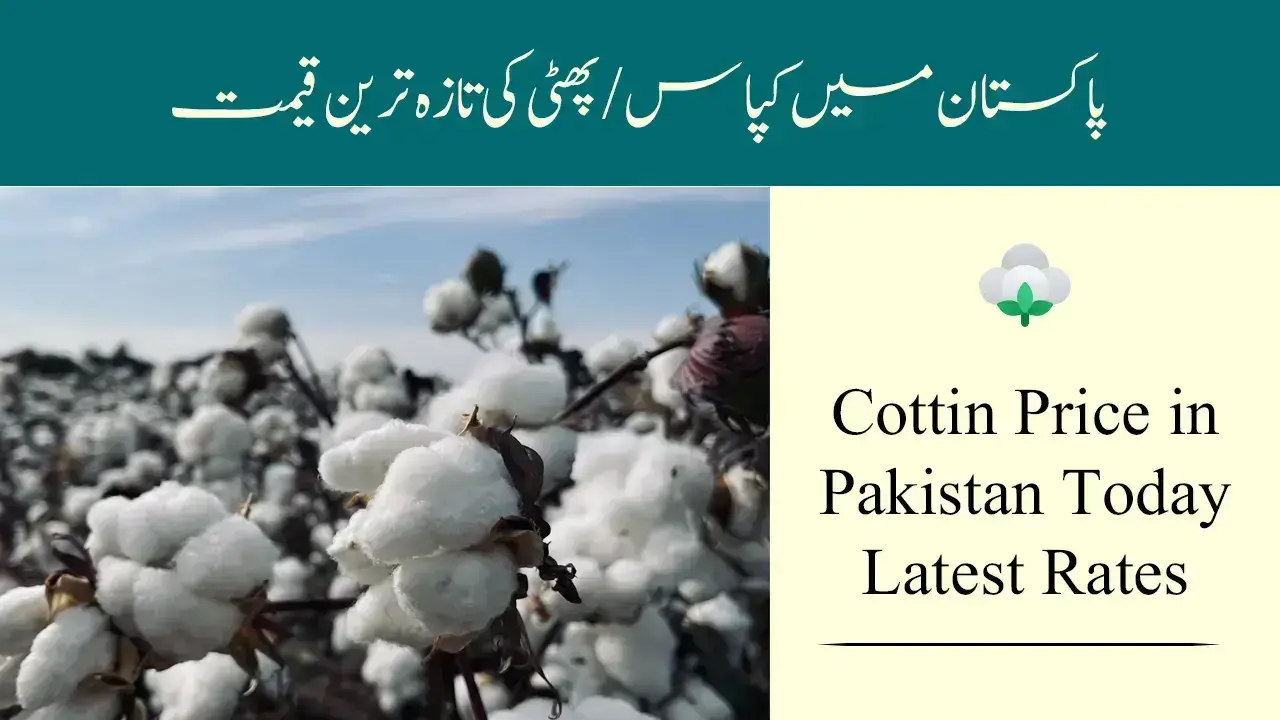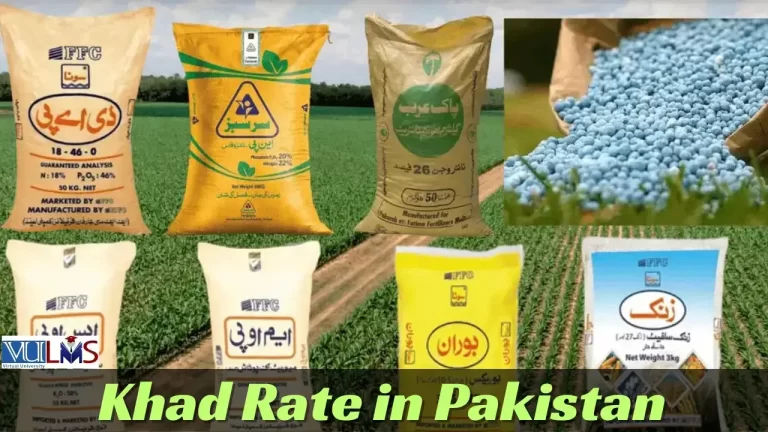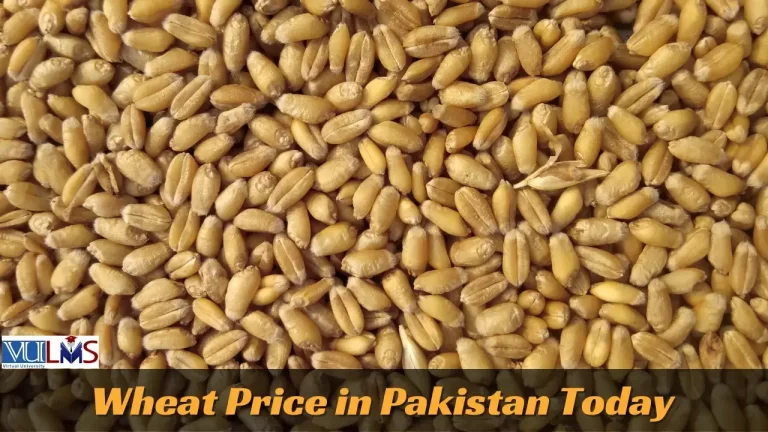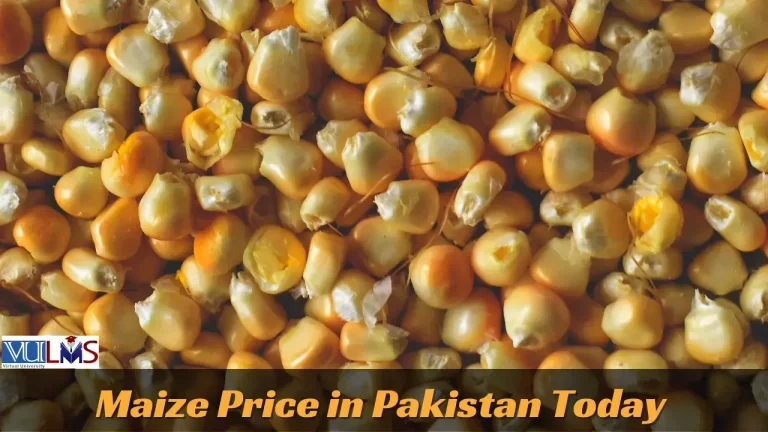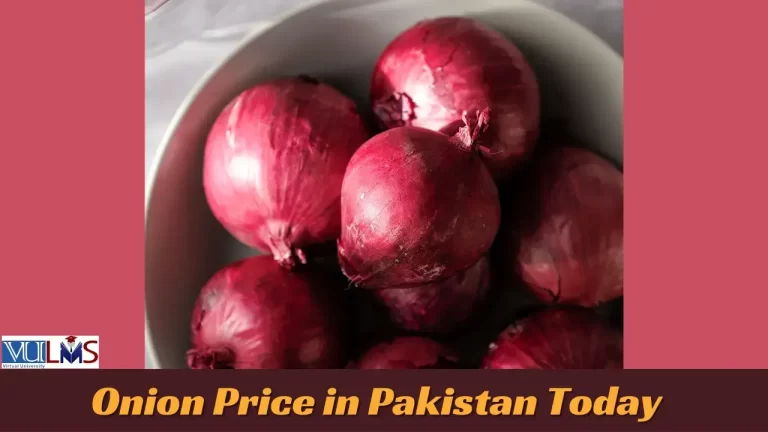Cotton Price in Pakistan Today 2024 | Phutti Rates in Market
The current cotton prices in Pakistan exhibit a range between 6,000 Rs to 7,000 Rs per 40 Kg. These numbers are not just a matter of financial statistics; they are the lifeblood of Pakistan’s agricultural and textile sectors. Pakistan, a significant global cotton producer, relies heavily on the ebb and flow of cotton prices. In this article, we will delve into the world of cotton pricing in Pakistan, exploring its implications, the factors that drive these price variations, and strategies for both buyers and farmers in this ever-evolving market.
The cotton industry in Pakistan is a complex ecosystem with diverse stakeholders. Therefore, cotton farmers require fair and stable prices for their livelihood, while textile manufacturers seek affordable cotton to ensure smooth operations. Comprehensive knowledge of this market is essential for all, as cotton prices significantly impact the nation’s economy and daily life.
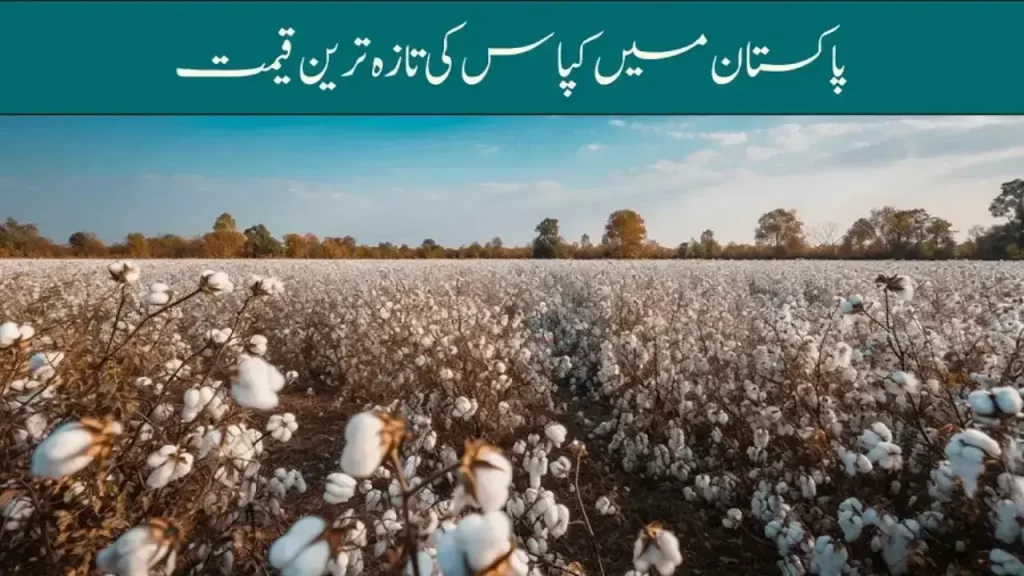
Cotton Price in Pakistan Today 2024 | Latest Rates
Before we dive deeper into the cotton market, let’s first take a look at the current scenario. As of 2024, the cotton price in Pakistan exhibits a range between 6,000 Rs to 7,000 Rs per 40 Kg, with variations across different cities. This fluctuation is not merely a statistical blip; it’s a reflection of the dynamic nature of the cotton market in Pakistan.
In this ever-changing landscape, the cotton rates hold immense significance for both the agricultural and textile sectors. Pakistan, as one of the world’s leading cotton producers, is inextricably linked to the cotton market. The prices of cotton influence the cost structures of various industries and have a direct impact on the everyday lives of its citizens. To truly understand the ramifications of these fluctuations, we must take a closer look at the cotton market itself.
Today Cotton rate in the Punjab
Punjab, the agricultural heartland of Pakistan, plays a vital role in the country’s cotton production. Today, we present you with the cotton price in Punjab, a region where agriculture and cotton cultivation are deeply intertwined. The table below offers detailed information on cotton prices in Punjab, ensuring that you have access to the latest data critical for farmers, traders, and the textile industry.
| City | Minimum Price (PKR) | Maximum Price (PKR) | Average Price (PKR) |
|---|---|---|---|
| Ghotki | PKR 6,000 | PKR 8,000 | PKR 7,000 |
| Yazman Mandi | PKR 6,500 | PKR 7,400 | PKR 6,950 |
| Lodhran | PKR 6,500 | PKR 7,800 | PKR 7,150 |
| Dunga Bunga | PKR 7,500 | PKR 7,900 | PKR 7,700 |
| Fortabbas | PKR 7,000 | PKR 7,750 | PKR 7,375 |
| Rahim Yar Khan | PKR 6,000 | PKR 7,450 | PKR 6,725 |
| Khanewal | PKR 5,500 | PKR 7,500 | PKR 6,500 |
| Maroot | PKR 6,500 | PKR 7,600 | PKR 7,050 |
| Sanghar | PKR 7,000 | PKR 7,200 | PKR 7,100 |
| Khanpur | PKR 6,100 | PKR 7,600 | PKR 7,050 |
| Pattoki | PKR 6,200 | PKR 7,200 | PKR 6,700 |
| Daur | PKR 5,000 | PKR 7,500 | PKR 6,250 |
| Shahdadpur | PKR 4,500 | PKR 7,500 | PKR 6,000 |
| Sukkur | PKR 8,850 | PKR 9,850 | PKR 9,350 |
| Mailsi | PKR 6,000 | PKR 6,800 | PKR 6,400 |
| Padidan | PKR 6,000 | PKR 8,000 | PKR 7,000 |
| Fateh Pur | PKR 6,500 | PKR 7,200 | PKR 6,850 |
| Shujabad | PKR 6,500 | PKR 7,400 | PKR 6,950 |
| Salehput | PKR 6,000 | PKR 8,000 | PKR 7,000 |
| Ubauro | PKR 6,000 | PKR 8,000 | PKR 7,000 |
| Mian Channu | PKR 6,500 | PKR 7,600 | PKR 7,050 |
| Tando Allahyar | PKR 4,500 | PKR 7,500 | PKR 6,000 |
| Vehari | PKR 6,000 | PKR 7,700 | PKR 6,850 |
| Tando Adam Khan | PKR 3,350 | PKR 4,850 | PKR 4,100 |
| Arif Wala | PKR 6,100 | PKR 7,050 | PKR 6,575 |
| Naushahro Feroze | PKR 7,000 | PKR 7,300 | PKR 7,150 |
| MianWali | PKR 7,200 | PKR 7,800 | PKR 7,500 |
| Ali Pur | PKR 6,200 | PKR 7,500 | PKR 6,500 |
| Yazman Mandi | PKR 6,500 | PKR 7,400 | PKR 6,950 |
| Shujabad | PKR 7,200 | PKR 7,100 | PKR 7,150 |
| Sanghar | PKR 7,000 | PKR 7,200 | PKR 7,100 |
| Hasilpur | PKR 6,600 | PKR 7,000 | PKR 6,800 |
| Mian Channu | PKR 6,500 | PKR 7,600 | PKR 7,050 |
Cotton Price in Sindh Today 2024
Sindh, with its significant share in cotton production, is another key contributor to Pakistan’s cotton industry. In 2024, Sindh’s cotton rates are of utmost importance to farmers, traders, and textile manufacturers. The table below provides a comprehensive overview of cotton prices in Sindh, allowing you to stay updated on market dynamics, regional conditions, and their impact on the broader cotton sector.
| City | Minimum Price (PKR) | Maximum Price (PKR) | Average Price (PKR) |
|---|---|---|---|
| Umarkot | PKR 5,100 | PKR 6,000 | PKR 5,550 |
| Jhund | PKR 5,100 | PKR 6,000 | PKR 5,550 |
| Gharo | PKR 4,000 | PKR 5,600 | PKR 4,800 |
| Shahpur Chakar | PKR 5,600 | PKR 6,600 | PKR 6,100 |
| Kunri | PKR 4,100 | PKR 5,600 | PKR 4,850 |
| Daur | PKR 5,000 | PKR 7,500 | PKR 6,250 |
| Matiari | PKR 5,100 | PKR 6,000 | PKR 5,550 |
| Bandhi | PKR 5,000 | PKR 7,500 | PKR 6,250 |
| Mehrabpur | PKR 6,000 | PKR 8,000 | PKR 7,000 |
| Sukkur | PKR 6,500 | PKR 7,200 | PKR 6,850 |
| Dadu | PKR 7,500 | PKR 8,000 | PKR 7,750 |
| Sanghar | PKR 5,100 | PKR 6,000 | PKR 5,550 |
| Darya Khan Mari | PKR 6,000 | PKR 8,000 | PKR 7,000 |
| Digri | PKR 5,000 | PKR 5,600 | PKR 5,300 |
| Tando Allahyar | PKR 5,100 | PKR 6,000 | PKR 5,550 |
| Tando Adam Khan | PKR 5,100 | PKR 6,000 | PKR 5,550 |
| Ubauro | PKR 6,000 | PKR 8,000 | PKR 7,000 |
| Dunga Bunga | PKR 7,500 | PKR 7,900 | PKR 7,700 |
| Khairpur | PKR 6,000 | PKR 8,000 | PKR 7,000 |
| Pano Aqil | PKR 6,000 | PKR 8,000 | PKR 7,000 |
| Badin | PKR 5,000 | PKR 5,600 | PKR 5,300 |
| Hyderabad | PKR 6,000 | PKR 6,600 | PKR 6,300 |
| Ghotki | PKR 6,000 | PKR 8,000 | PKR 7,000 |
| Jhudo | PKR 5,000 | PKR 5,500 | PKR 5,250 |
| Mirpur Khas | PKR 5,100 | PKR 6,000 | PKR 5,550 |
| Gotki | PKR 6,700 | PKR 7,200 | PKR 6,950 |
| Nawabshah | PKR 5,700 | PKR 6,600 | PKR 6,150 |
| Karachi | PKR 7,100 | PKR 7,600 | PKR 7,350 |
| Dighri | PKR 5,000 | PKR 5,600 | PKR 5,300 |
| Shahdadpur | PKR 4,500 | PKR 7,500 | PKR 6,000 |
| Sukkur | PKR 8,850 | PKR 9,850 | PKR 9,350 |
| Khipro | PKR 7,000 | PKR 7,500 | PKR 7,250 |
Cotton Price in Balochistan
Balochistan, with its unique agricultural landscape, also influences Pakistan’s cotton production. Today, we bring you the cotton rate in Balochistan, shedding light on regional dynamics and their implications. The table below offers insights into the cost structure of cotton in this province, helping local farmers, traders, and the cotton market understand the unique conditions that shape the industry.
| City | Minimum Price (PKR) | Maximum Price (PKR) | Average Price (PKR) |
|---|---|---|---|
| Panjgur | PKR 7,000 | PKR 7,500 | PKR 7,250 |
| Winder | PKR 8,650 | PKR 9,100 | PKR 8,875 |
| Sakran | PKR 6,900 | PKR 7,300 | PKR 7,100 |
| Sibi | PKR 7,000 | PKR 7,400 | PKR 7,200 |
| Uthal | PKR 7,000 | PKR 7,500 | PKR 7,250 |
| Dureji | PKR 6,900 | PKR 7,200 | PKR 7,050 |
| Hub | PKR 6,700 | PKR 7,000 | PKR 6,850 |
| Lakhra | PKR 7,000 | PKR 7,300 | PKR 7,150 |
| Khuzdar | PKR 8,000 | PKR 8,300 | PKR 8,150 |
| Turbat | PKR 6,500 | PKR 6,800 | PKR 6,650 |
| Lasbella | PKR 6,800 | PKR 7,000 | PKR 6,900 |
| Dera Bugti | PKR 7,200 | PKR 7,600 | PKR 7,400 |
| Kharan | PKR 8,500 | PKR 9,000 | PKR 8,750 |
| Rakni | PKR 7,200 | PKR 7,500 | PKR 7,350 |
| Barkhan | PKR 7,400 | PKR 7,700 | PKR 7,550 |
| Nal | PKR 8,650 | PKR 9,100 | PKR 8,875 |
| Wadh | PKR 8,500 | PKR 8,700 | PKR 8,600 |
| Kharan | PKR 8,500 | PKR 9,000 | PKR 8,750 |
| Khuzdar | PKR 8,000 | PKR 8,300 | PKR 8,150 |
| Uthal | PKR 7,000 | PKR 7,500 | PKR 7,250 |
Understanding the Cotton Market
The cotton market in Pakistan is a multifaceted ecosystem that involves a multitude of players, each with its own set of interests and concerns. At its core, this market involves cotton farmers, textile manufacturers, traders, and government regulators. The intricate web of interactions between these stakeholders is what ultimately determines the cotton price in Pakistan.
For cotton farmers, the price of cotton directly affects their livelihoods. It is their hard work and dedication that transforms cotton seeds into the raw material for the textile industry. When cotton prices rise, farmers stand to gain, and when they fall, it’s the farmers who feel the pinch.
On the other side of the spectrum, textile manufacturers rely on a steady and affordable supply of cotton to sustain their operations. Any drastic increase in cotton prices can have a cascading effect on the textile industry, leading to increased costs of production and, potentially, consumer prices.
For More Related information Please Visit: vulmsloginn.pk
Factors That Affect the Cotton Price in Pakistan
Cotton prices in Pakistan result from various factors beyond supply and demand. A grasp of these influences is vital for those in the cotton industry. This section explores the elements impacting cotton pricing, offering a comprehensive market view.
1- Crop Yields
The quantity of cotton produced, often referred to as crop yields, is a fundamental factor affecting cotton prices. A successful cotton harvest with high yields can lead to increased supply and potentially lower prices. Conversely, a poor harvest can lead to reduced supply and higher prices.
2- Weather Conditions
Weather is a crucial factor in cotton pricing. Rainfall, temperature, and climatic conditions directly influence cotton crop yields. Unexpected droughts or excessive rainfall can profoundly impact both the quantity and quality of cotton harvests, causing price fluctuations.
3- Global Demand for Textiles
Global textile demand significantly impacts Pakistan’s cotton prices. Being a major cotton producer worldwide, Pakistan’s cotton exports are intricately linked with the global appetite for clothing and textiles. Increased international demand for cotton-based goods can result in elevated domestic cotton prices.
4- International Market Dynamics
Cotton prices are interconnected with the global cotton market. Changes in cotton prices in major cotton-producing countries, such as the United States and India, can influence prices in Pakistan. Additionally, events like trade agreements, international trade disputes, and shifts in global cotton production can impact cotton prices.
Understanding the intricacies of these factors and their interplay is vital for stakeholders in the cotton industry. By keeping a close watch on these elements, participants can make informed decisions and navigate the ever-changing landscape of cotton pricing in Pakistan.
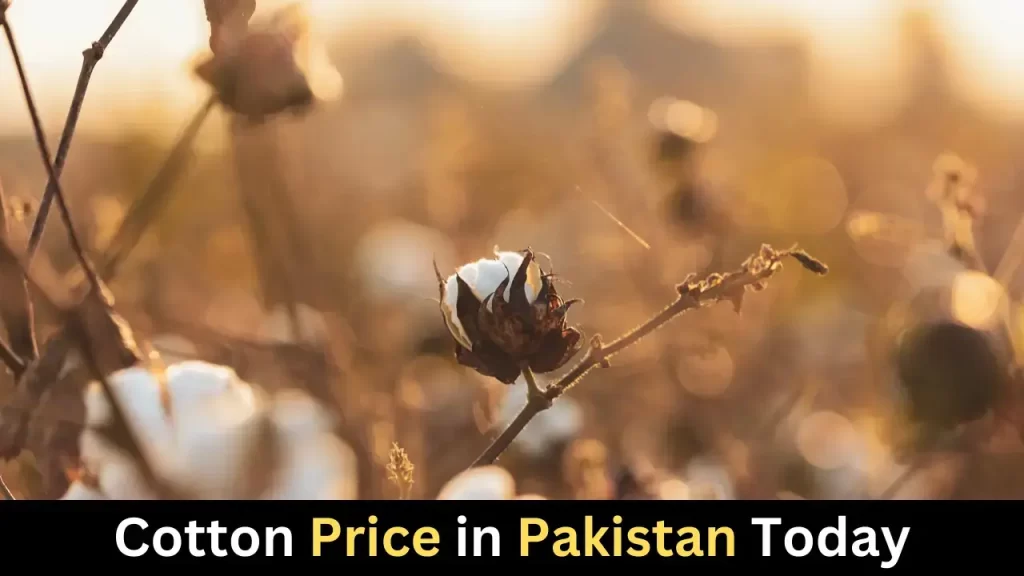
Historical Trends in Cotton Prices
To gain a more comprehensive perspective, let’s take a step back in time. The historical trends in cotton prices reveal patterns that help us understand the market’s evolution. These trends are shaped by a myriad of factors, from weather conditions affecting crop yields to global demand for textiles.
In recent years, the cotton market in Pakistan has experienced its share of ups and downs. The prices have been subject to both international and domestic influences, making it a volatile commodity. By examining historical data, we can identify the market’s resilience and adaptability.
How to Monitor Cotton Prices in Pakistan?
Monitoring cotton prices is a critical task for anyone engaged in the cotton industry. To effectively stay updated on cotton rates in Pakistan, consider the following strategies and resources:
- Real-Time Data Sources: Utilize websites and mobile applications that provide real-time information on cotton prices. These platforms often include price charts, historical data, and market analysis.
- Cotton Exchanges: Keep an eye on cotton exchanges, which act as intermediaries connecting buyers and sellers in the market. They provide insights into trading volumes, price trends, and supply and demand dynamics.
- Government Reports: Government reports, typically released by the Ministry of Agriculture, offer valuable data on cotton production, imports, and exports. They provide essential information for farmers and traders.
- Subscription Services: Consider subscribing to market research firms that offer in-depth analysis, market forecasts, and trend reports. These services provide expert insights and comprehensive data.
- Market Analysis: Explore market analysis reports available through financial news outlets. These reports interpret the data, offering insights into the factors that influence price movements.
- Networking and Industry Events: Build a network within the cotton industry by engaging in conversations with fellow farmers, traders, and experts. Participating in industry gatherings offers distinctive chances to acquire valuable insights and knowledge.
By using these tools and strategies, you can stay informed about cotton prices, make well-informed decisions, and navigate the dynamic cotton pricing landscape in Pakistan effectively.
Cotton Price Predictions for 2024
As we move into 2024, the cotton market in Pakistan is subject to a variety of factors that will influence price trends. While predicting cotton prices with absolute certainty is a challenging task, we can explore potential scenarios and trends that may shape the cotton market in the coming year.
Strategies for Cotton Buyers
Cotton buyers should consider diversifying their supplier base to mitigate risks, lock in prices through contracts to ensure stability, and monitor global trends for insights into international factors affecting domestic prices. Efficient supply chain management can help reduce costs and improve competitiveness.
Strategies for Cotton Farmers
Cotton farmers can enhance profitability by selecting suitable cotton varieties, optimizing farming practices, staying informed about market trends, and making the most of government support and subsidies. Adapting to weather variations and being prepared for climate challenges is also crucial to ensure a successful harvest in the coming year.
Conclusion of Cotton Price in Pakistan
In conclusion, the cotton price in Pakistan is not just a statistic; it’s a reflection of a complex ecosystem with far-reaching implications. The fluctuation in cotton rates affects farmers, textile manufacturers, and the broader economy of Pakistan. As we move forward, staying informed about the market’s dynamics and adopting sound strategies will be key for all stakeholders.
Frequently Asked Questions (FAQs)
The current phutti rate in Sindh varies and is influenced by multiple factors. It’s advisable to check with local sources or online platforms for the most up-to-date rates.
Cotton holds immense significance in Pakistan’s economy. It is a major contributor to the country’s GDP and employment, with the textile industry being a key driver of economic growth. The price of cotton has a direct impact on various sectors, making it a critical commodity for Pakistan.
International demand for cotton has a significant impact on cotton prices in Pakistan. When global demand for textiles is high, it can drive up cotton prices, benefiting Pakistani cotton producers.
Government subsidies for cotton farmers can be subject to change based on policy decisions and budget allocations. Farmers should stay informed about government policies related to the agriculture sector.
Farmers can improve cotton yield and profitability by adopting modern farming techniques, selecting high-yield cotton varieties, and ensuring proper irrigation and pest management.

